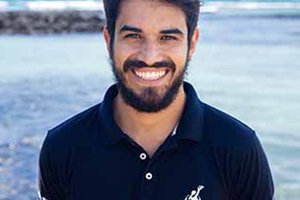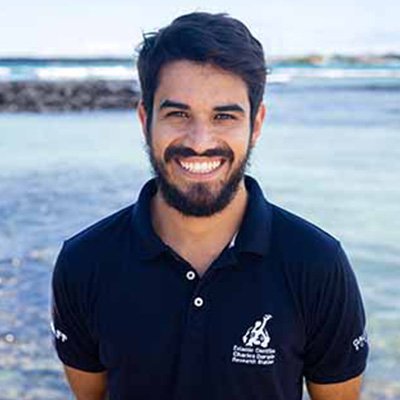I was invited to join a field trip with the Petrel Monitoring Project, led by The Galapagos National Park Directorate (GNPD). This trip was especially meaningful to me because it brought back fond memories of excursions I took with my father as a child.
Very early in the morning, we drove up to the highlands of Santa Cruz, Cerro Crocket to see the Galapagos Petrels, a seabird endemic to the Galapagos Islands. Their nesting sites are on Santa Cruz, Floreana, San Cristóbal, Santiago, and Isabela Island where they dig burrows, but they fly all over the archipelago, feeding on fish and squid. The Petrel is recognizable by its black top and white underbellies.
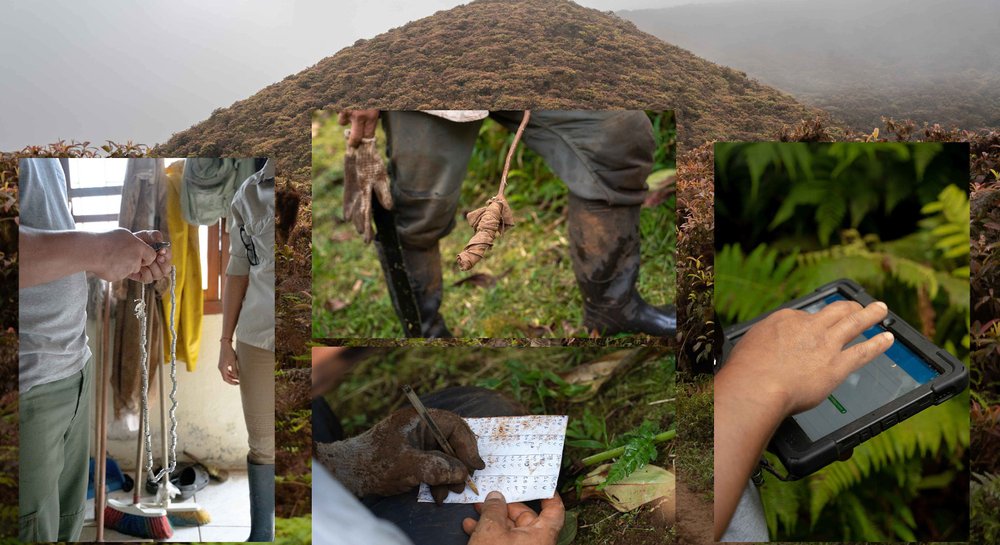
For this trip, we met with the GNP team, Javier, Milton and Carlos. As we start our hike, they told us about the project. The Petrel Monitoring Project started in 1982, by Malcolm Colter, who was at the time working for the Charles Darwin Foundation (CDF). The first monitoring started on Floreana Island, where they enlisted the help of a local by the name of Felipe Cruz (My dad). Petrels were in steep decline due to introduced species. In the past, after locating an inhabited nest, the team used to place poison pellets for the smaller introduced species and hunt for the larger mammals. Thanks to these actions, after serval years, the breeding colonies increased. The project could then move on to the other islands.
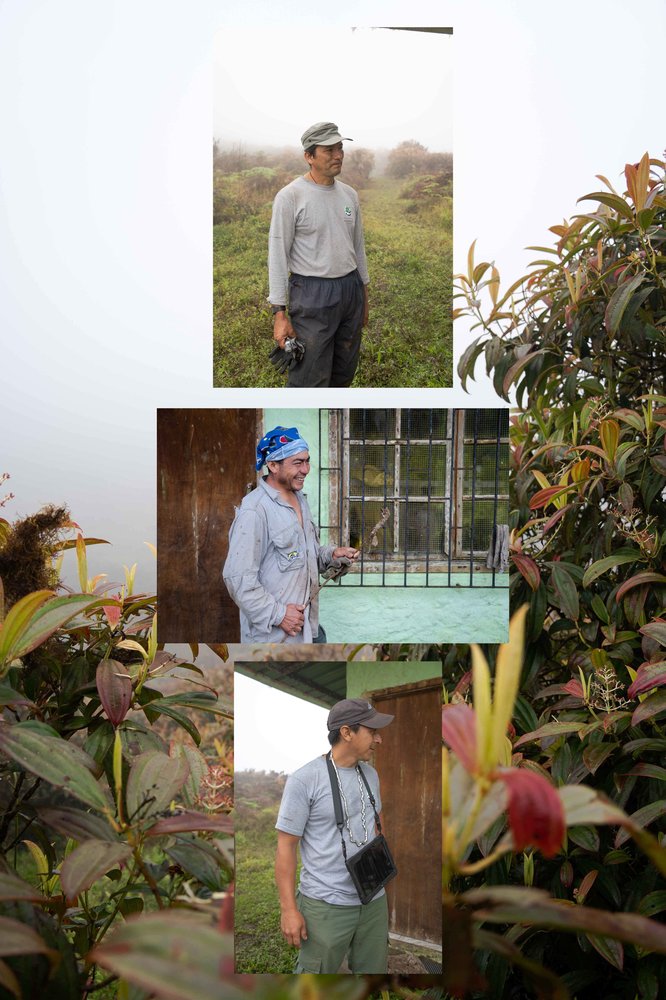
When I was little, my dad would tell me about his time in the project. I asked him why he decided to work on the petrel project, as he hadn’t completed his studies and he wasn’t a scientist, he was just a kid from Floreana Island. I remember he told me “A bit of paper doesn’t mean you’ll care more or less about something. They are fascinating animals, birds that spend most of their life out at sea, then come back to dig burrow, breed, nest and then fly. They were in danger of going extinct and it was our fault, so as islanders it was our duty to try and save them.”
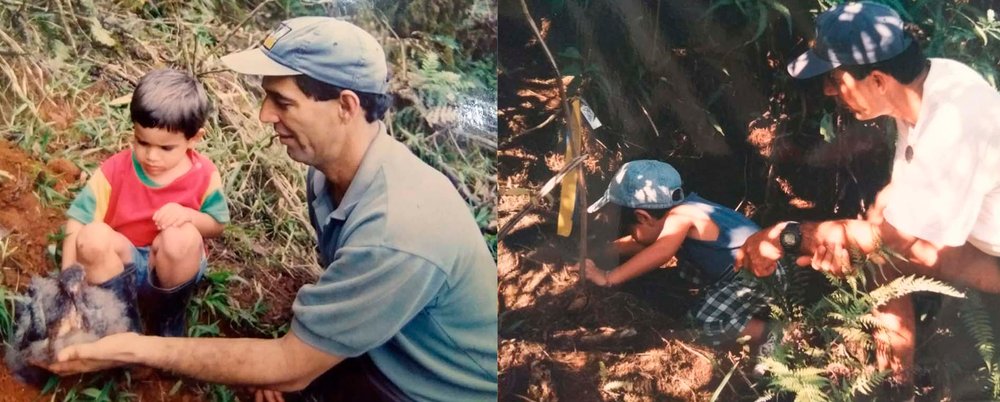
Back to the present, as we walked, the rangers talked about one of the newer methods to help petrel colonies, cutting down introduced blackberry plants, which grow in thickets with sharp thorns, that can in-toggle petrels and stop them from returning to their nest. Wilson Cabrera said, “keeping the area clean from blackberry, we see that the petrel population has responded positively.”
We started our descent, and each burrow we come across has a healthy petrel. There are more than 100 burrows in this area, as the team works by sections. Most of the petrels have patches of grey fathers, which means they are fledgling, in another couple of weeks and they’ll have their primary colours, black/white feathers.
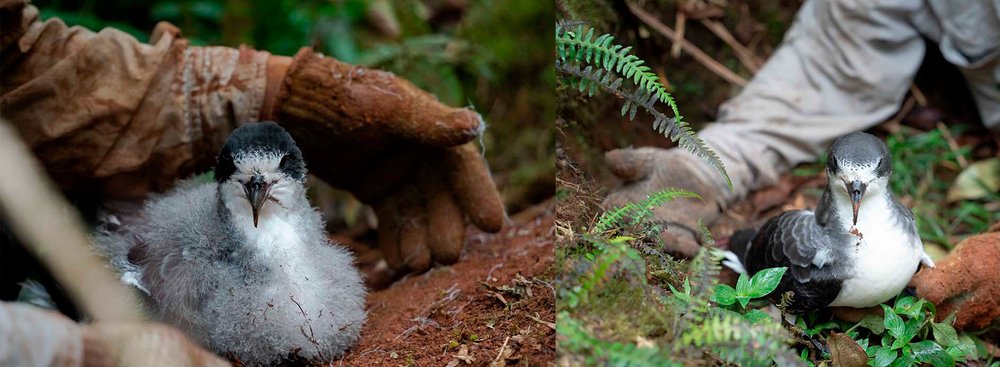
We are at our final nest, the rangers then tags the petrel, the ring goes around its foot, the plyers are set to a certain diameter so that way they don’t cause any damage to the petrel. Once on the ground, it heads back into its burrow.
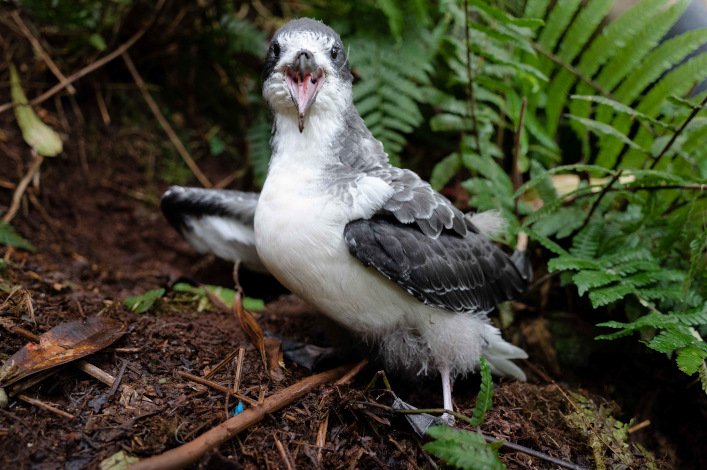
Although their population numbers are on the rise, the Galapagos Petrel is listed as “Critically Endangered” by the IUCN Red List of Threatened Species. The petrel monitoring program stands as a very real statement of the need for long-term conservation efforts, as it’s necessary to see how populations are doing over time. Without the constant help of park rangers, and independent scientists this species would have gone extinct which is a very sad reality, but if this project has taught us anything is that there’s always hope.
Firstly, I want to thank the Galapagos National Park for allowing me to accompany their rangers for the day, also to the GNP team: Wilson Cabrera, Javier Castillo, Milton Calva and Carlos Gaonom, for your tireless effort in keeping this species safe with the same enthusiasm as the original project.
Sebastian Cruz, and Carolina Proaño (Who work independently on the monitoring of the petrels) for taking the time to give me feedback.





